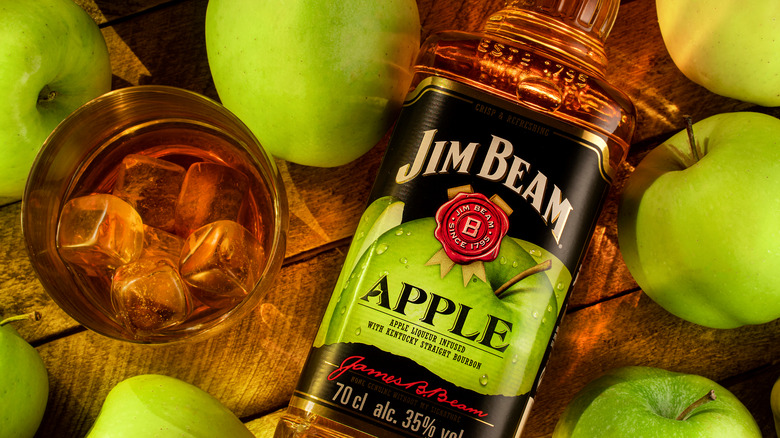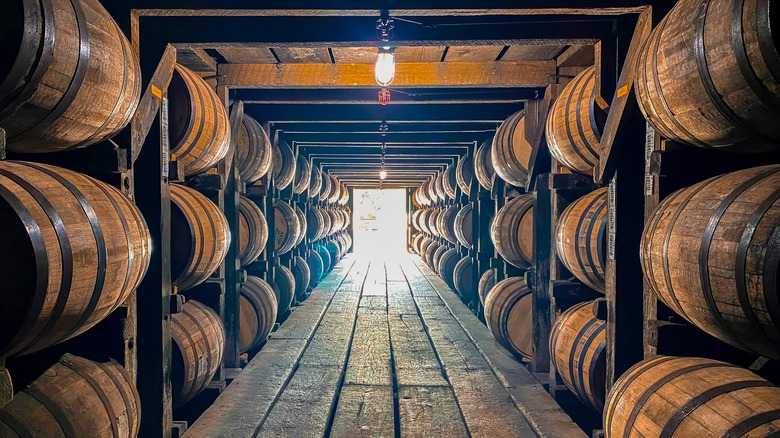What You Need To Know About Flavored Bourbon
If you're well-acquainted with America's national spirit then you'll be familiar with the incredible range of flavors that can be detected in a single glass of bourbon. However, around the mid-2000s, some American whiskey brands started to expand their product ranges by adding extra flavorings to their bourbon. Some drinkers find the style more palatable — these products are typically sweeter and less boozy than unadulterated bourbon — and they can be an effective and tasty addition to cocktails. Here's the kicker though — there's technically no such thing as flavored bourbon.
There are some pretty stringent regulations that have to be met for a whiskey to legally be considered a bourbon. One of these conditions is that no flavorings or colorings are allowed to be added to the spirit, so the moment any extra vanilla, honey, or cinnamon is blended into the bourbon, it's no longer considered a bourbon. Technically, a distiller can use the term "blended bourbon" in this case, but many simply refer to their product as a flavored whiskey. Some producers get around the naming issue in other ways. Take Jim Beam, for example. It has a highly popular selection of flavored whiskeys, but labels these products as "[fruit] liqueur infused with Kentucky straight bourbon whiskey." This doesn't mean you won't find any bottles labeled as flavored bourbon because the rules are sometimes relaxed on exported whiskey, but you shouldn't see it being used in the United States — unless the bottler is flouting the law.
What other regulations define bourbon?
The exclusion of added ingredients or flavorings to bourbon is just one of the stipulations that distilleries have to follow. The rules are straightforward but extensive, covering things like where the spirit is made, which ingredients are used, how long the whiskey is aged for, and even the type of barrels that are used.
First, bourbon has to be produced in the United States or one of its territories. There's a misconception that bourbon has to come from Kentucky — likely due to the state's historic association with the spirit — but this is inaccurate. Bourbon also has to include at least 51 percent corn in its mash bill, which is why the style has a notably sweet profile compared to other whiskeys.
The spirit can't be distilled to more than 80% ABV, it has to enter the barrels for aging at 62.5% ABV or lower, and it can't be less than 40% ABV when it's bottled. Additionally, the barrels must be new and made with charred oak. Charring the interior of the barrels is extremely important, as the burned wood is part of what gives bourbon its iconic flavoring and coloring. To be labeled "straight bourbon," the whiskey has to be aged for at least two years. "Bottled-in-bond" bourbon follows even more stringent conditions, where it has to be aged for at least four years in a federally bonded warehouse and bottled at 50% ABV.

